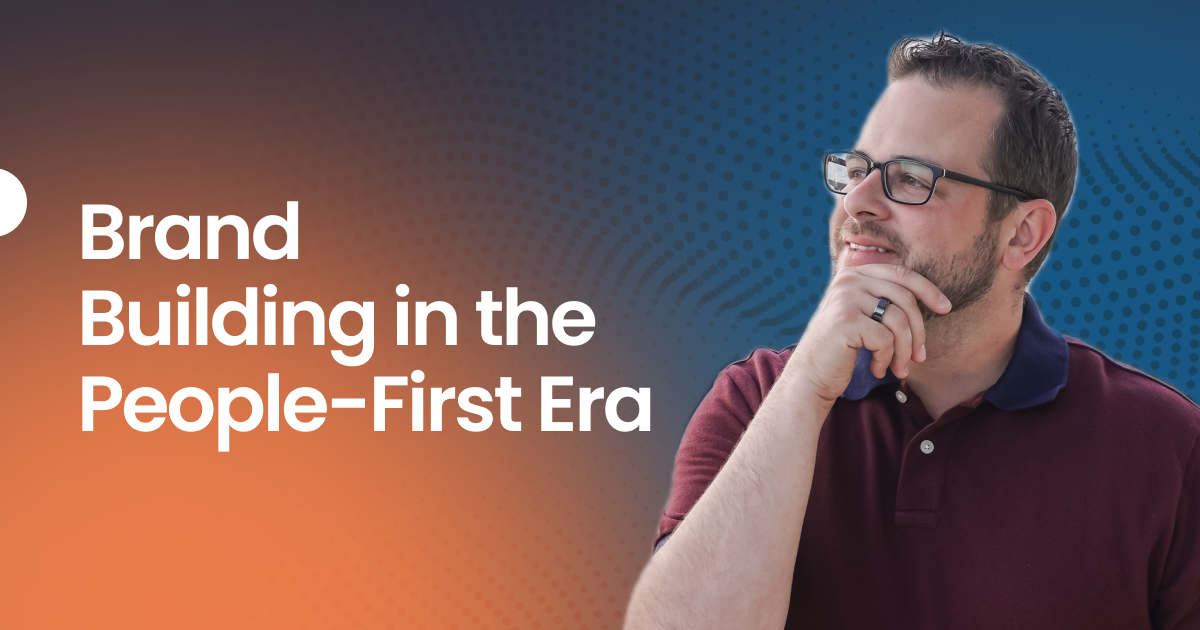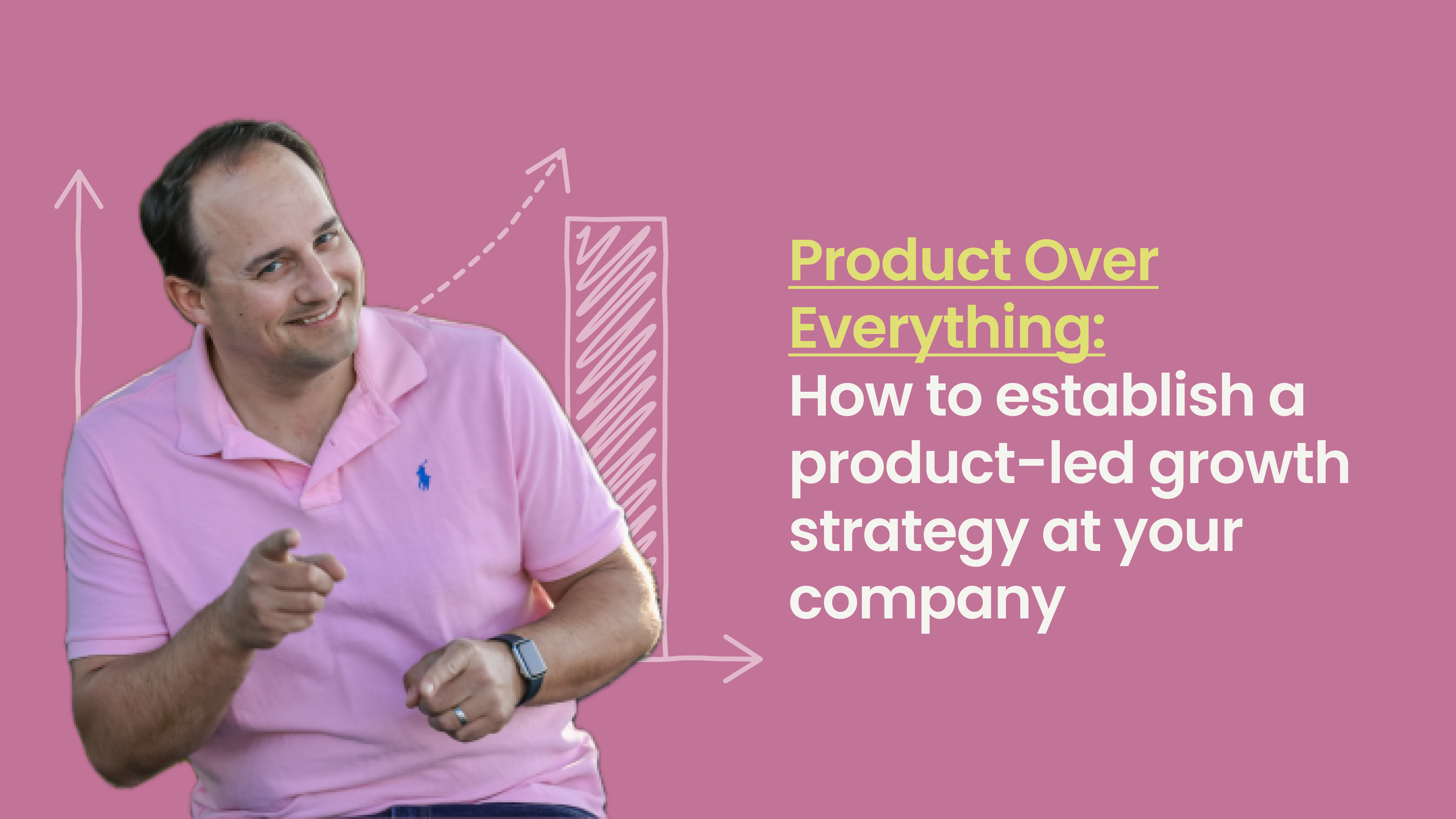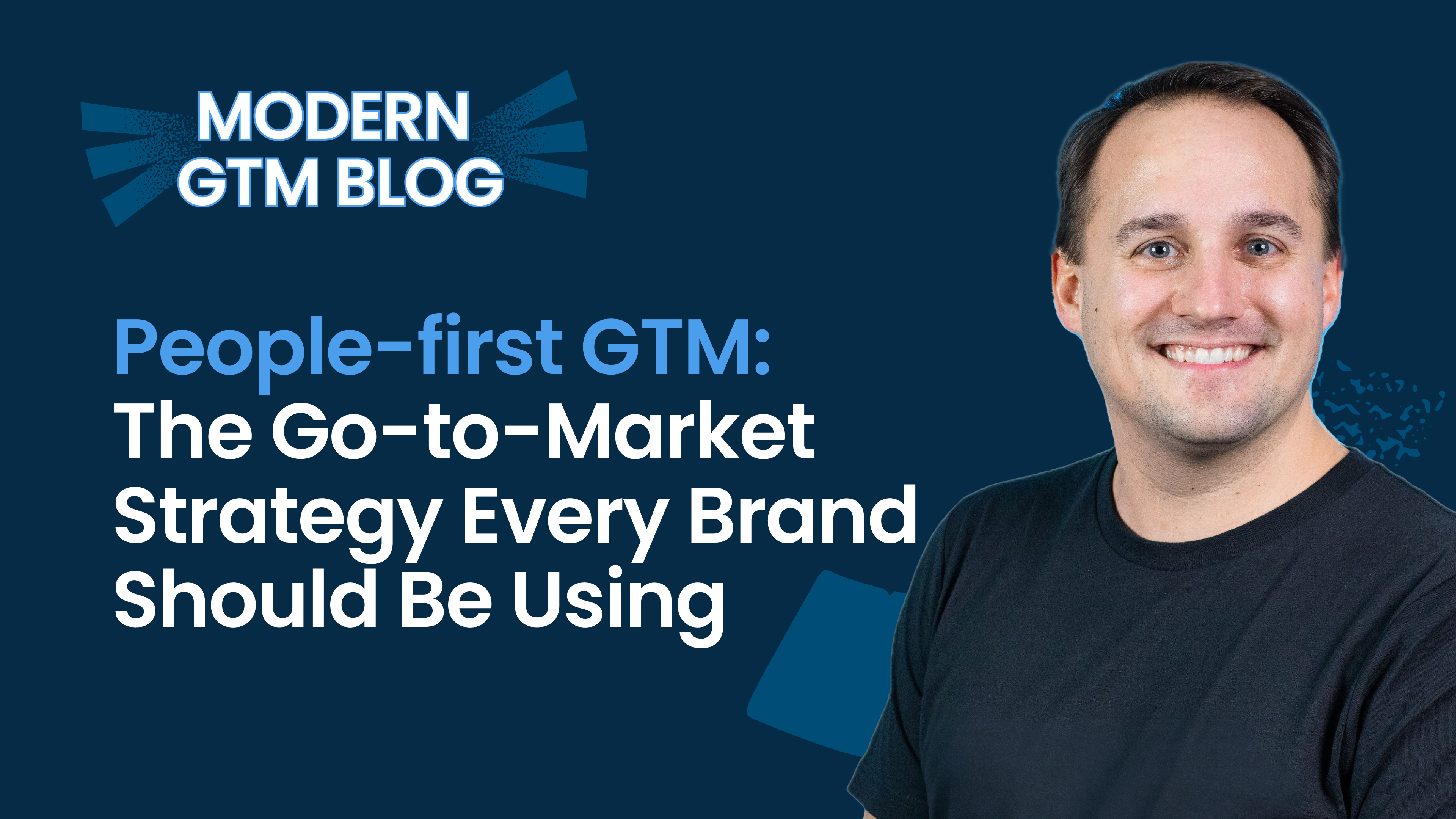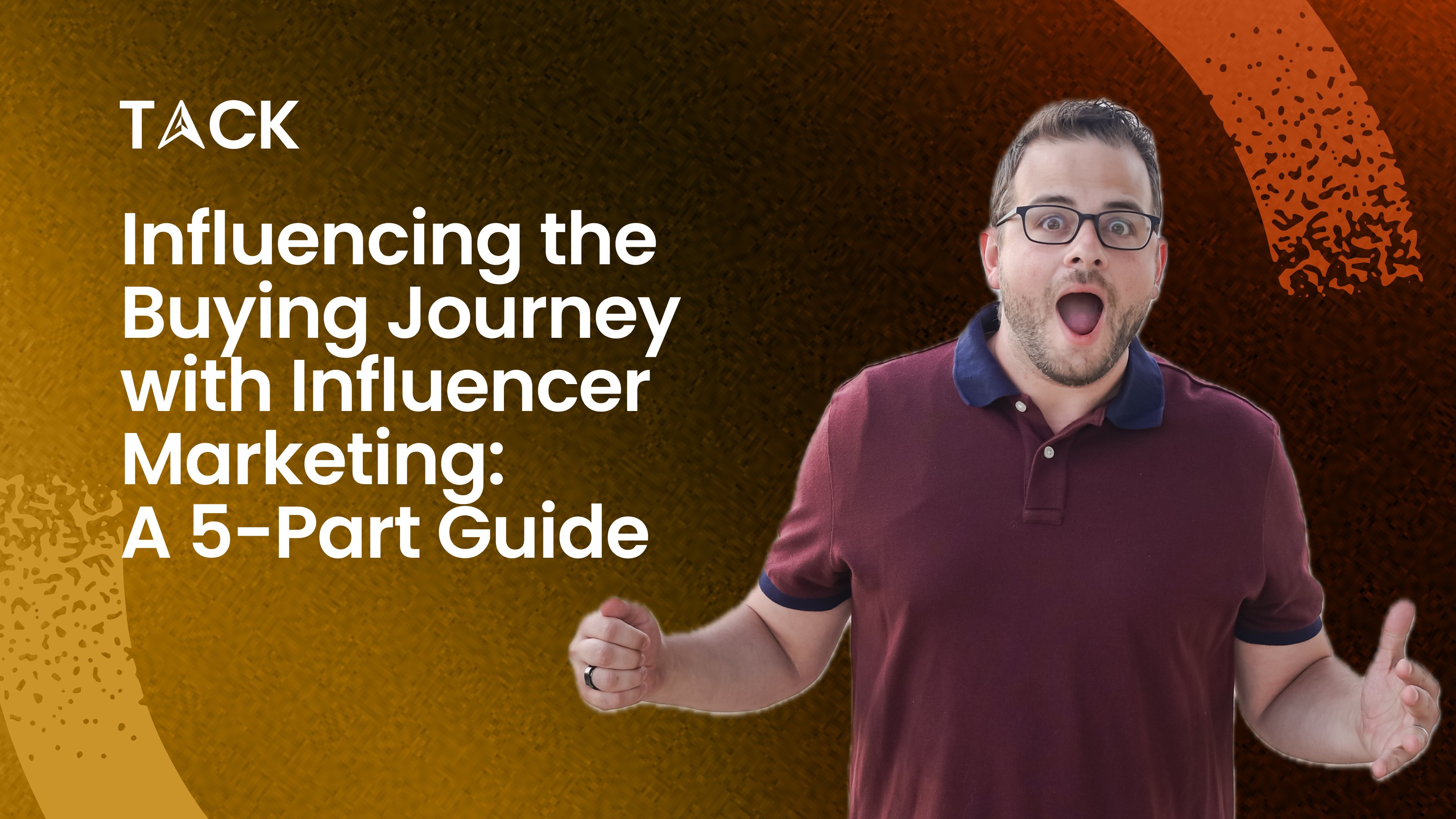What’s up, everyone? Another beautiful day outside! I am PUMPED for summer, although not as pumped to have 3 small kids at home all summer. Before we dive in today, I’ve got an exciting announcement from my co-founder, Mark Kilens.

Launched today!
Mark Kilens, my co-founder, launched a brand new people-first GTM course & certification today. Your business needs a purpose. Without one, you're in trouble. It's the reason WHY your business exists. TACK aims to help businesses and marketers learn how to match their go-to-market (GTM) to how people buy today. That's why we created People-first GTM.
People-first GTM is the only GTM system that aligns your strategy with how people buy today. This is why we built and are investing in the TACK Network and why we started TACK GTM, an On-Demand GTM services firm.
Mark is launching a new live nine-week course about People-first GTM this Tuesday. This course will teach you how to implement, measure, and grow a People-first GTM strategy at your business. This is how TACK grows efficiently and how thousands of other businesses align with customer expectations.
The result? Creating a memorable brand, spinning a word-of-mouth flywheel, and growing a network of partners.
This course is
currently open only for Insiders at $15 a month or $99 a year.
Don't miss out on this opportunity to revolutionize your GTM strategy!
Sign up here
PS: Not only do you get the course, BUT you also includes a resource hub with more than 250 templates, frameworks, tools, and on-demand masterclasses plus:
- People-First Advantage book packed with more than 135 ideas to improve your marketing outcomes
- New weekly GTM masterclasses taught by the best B2B marketers
- A Slack community for asking questions and networking
- A new daily go-to-market article published everyday in Slack
- People-first GTM course and certification
- A private one-hour strategy or coaching call with Mark or Nick
- Member matchmaking every month
Alright, who’s ready for today? Let’s get it.
In the dynamic landscape of brand building, there's a distinct shift towards human-centric approaches, marking the onset of the modern era. What's new and effective today may render traditional methods outdated. So, what works, and why should you adopt a human-level brand-building strategy in the People-First Era?
What's New and Effective:
Modern brand building revolves around authenticity, transparency, and relatability. Brands that embrace these qualities resonate deeply with their audience. Here's what's working:
-
Authenticity:
Consumers crave genuine connections. Brands that authentically express their values and beliefs build trust and loyalty. -
Transparency:
Openness about business practices, pricing, and operations fosters trust and credibility. -
Engagement:
Interactive and personalized experiences drive meaningful connections with the audience, enhancing brand perception and loyalty.
What's Outdated:
Traditional, one-way communication and impersonal branding tactics are becoming obsolete. Consumers are seeking authentic, humanized interactions with brands. Outdated strategies include:
-
Hard-Selling:
Pushy sales tactics and aggressive marketing are perceived as intrusive and off-putting. -
Lack of Transparency:
Concealing information or misleading advertising erodes trust and damages brand reputation. -
Generic Messaging:
Cookie-cutter approaches fail to resonate with diverse audiences who seek personalized experiences.
Importance of Human-Level Brand Building in the People-First Era:
-
80% of consumers say brand authenticity is important when considering which brands to engage with.
-
56% of buyers want more personalized offers and experiences from vendors.
-
77% of marketers agree that AI helps them create better, more personalized content.
-
Authentic connections build trust. Edelman reports that 70% of B2B buyers trust brands that share their values.
Businesses prioritizing human-level brand building differentiate themselves in a world dominated by automation and AI. Adopting this approach fosters stronger customer connections, drives brand loyalty, and ultimately fuels business growth.
Finding Your Brand's North Star
Something super important in the world of brand building is finding your brand's North Star and having a guiding light that keeps you on track, especially in a world where everything seems to be moving a mile a minute.
So, what exactly is this North Star?
Think of it as your brand's ultimate purpose, why you exist beyond just making money. It's about finding what truly matters to you and your audience, something you can align your team, brand, and community around.
Introducing the Vision and Mission Statement:
Your vision statement is like the big "why" behind your brand. It's the grand vision of what you want to achieve and the impact you want to make in the world. On the other hand, your mission statement is more about the "how"—how you plan to make that vision a reality.
Why does this matter?
Imagine trying to build a house without a blueprint. It'd be chaos! Your vision and mission statements act as your blueprint, guiding every decision you make, from the products you create to how you communicate with your audience.
TACK's North Star:
"People-first GTM." This is more than just a catchy slogan; it's a mindset that drives everything they do. It's about putting people at the forefront of their business strategy, prioritizing meaningful relationships over everything else.
When you have a clear North Star and vision and mission statements to back it up, magic happens. Your team becomes more aligned, your brand becomes more purposeful, and your community becomes more engaged—everyone's rowing in the same direction toward a common goal.
Crafting Your Brand Voice and Identity
Ever heard the saying, "It's not what you say, it's how you say it"? Well, in branding, that rings especially true. Your brand's tone sets the stage for how people perceive you. It's like your brand's personality, shining through in every word, video, or social media post.
Enter Brand Archetypes:
Imagine giving your brand a personality makeover – that's where brand archetypes come in. These are like the characters of your brand story, each with its own unique traits and quirks. They help humanize your brand at scale, making it relatable and memorable to your audience.

Examples Speak Louder Than Words:
Take Drift, for instance. They embody the Maverick Creator – bold, innovative, and unafraid to challenge the status quo. Then there's Airmeet, the Creative Hero – inspiring, imaginative, and always pushing boundaries. See how these archetypes breathe life into their brands?
Crafting Your Voice:
How do you find your brand's voice? Start by digging deep into your brand's values and personality. Are you witty and irreverent like Drift, or perhaps more inspiring and visionary like Airmeet? Whatever it is, authenticity is key. Your audience can sniff out fake vibes from a mile away!
Be Original, Be Specific:
In a sea of brands vying for attention, being original is your secret weapon. Don't be afraid to let your brand's quirks and idiosyncrasies shine through. And when it comes to communication, specificity is your best friend. Get laser-focused on your message, and watch your audience hang onto every word.
Building a People-First Brand
This section will dive into the heart of building a brand that puts people first.
1. Transparency Builds Trust:
Picture this: a brand that lays all its cards on the table, from pricing to company values. That's transparency, and it's the cornerstone of a people-first approach. When you open up to your audience, you invite them into your world, building trust every step of the way.
2. Sparking a Movement:
Want to ignite a fire in the hearts of your audience? It's time to create a spark – a rallying cry that brings people together around a shared mission or idea. Whether through compelling content, engaging events, or innovative products, find ways to inspire and empower your community to be part of something bigger than themselves.
3. Behind the Scenes Magic:
Have you ever wondered what happens behind closed doors at your favorite brands? Well, wonder no more! Share the magic of your brand's inner workings with behind-the-scenes content. From team meetings to product development, give your audience a peek behind the curtain and watch as their connection to your brand deepens.
4. The Power of Personalization:
Personalization is the secret sauce that sets you apart in a world of mass marketing. Get to know your audience deeper – their preferences, pain points, and aspirations – and tailor your messaging and experiences to resonate with their unique needs. After all, nothing says "people-first" like putting your audience front and center.
5. Listening Leads to Learning:
Last but not least, never underestimate the power of listening. Your audience is the key to unlocking insights that fuel your brand's growth and evolution. Whether through surveys, social listening, or one-on-one conversations, make it a priority to listen to what your audience has to say and use that feedback to shape your brand's journey.
So there you have it, fellow brand builders—the blueprint for building a people-first brand that shines bright in your audience's hearts and minds.
The Power of Enablement
Enablement, in the context of business and branding, refers to equipping and empowering individuals within a company or community with the necessary tools, resources, and knowledge to succeed in their roles or endeavors. For people-first brands, enablement is crucial because it aligns with their core values of prioritizing individuals' needs, growth, and empowerment, whether they are employees, customers, or community members.
People-first brands recognize that their success hinges on the success of the people they serve. By investing in enablement initiatives, these brands demonstrate their commitment to supporting and uplifting their stakeholders, fostering a culture of collaboration, learning, and continuous improvement.
Enablement takes various forms, such as:
-
Employee Onboarding:
Providing comprehensive training and resources to new hires to help them integrate into the company culture, understand their roles, and contribute effectively from day one. -
Customer Education:
Offering educational resources, tutorials, and training programs empowers customers to make the most of the brand's products or services, ultimately enhancing their overall experience and satisfaction. -
Content Creation:
Developing informative and engaging content, such as guides, tutorials, videos, and webinars, that educates and inspires both internal teams and external stakeholders. -
Feedback Mechanisms:
Establish channels for feedback and communication to solicit input from employees, customers, and community members. This will enable the brand to improve and adapt continuously to evolving needs and preferences.
People-first brands recognize that enablement is not just a one-time initiative but an ongoing commitment to nurturing and supporting individuals at every stage of their journey. By prioritizing enablement, these brands foster stronger relationships, drive loyalty, and ultimately differentiate themselves in a crowded marketplace.
How to Bolster Enablement
1. Enablement Essentials:
Enablement is the fuel that keeps your brand engine running smoothly. It's all about equipping your team with the tools, knowledge, and support they need to excel in their roles. From onboarding new hires to empowering customers, enablement is the backbone of sustainable growth.
2. Hire for Success:
As your team grows, so does the need for specialized roles. Enter the education and enablement manager – the unsung hero responsible for shaping the learning journey of your team and customers. Investing in dedicated enablement roles ensures every team member has the resources they need to thrive.
3. Content is King:
Content is your greatest ally in enablement. From educational resources to interactive workshops, create a treasure trove of content that empowers your team and customers to succeed. By delivering valuable insights and practical guidance, you position your brand as a trusted partner in their journey to success.
4. Feedback Loop:
Enablement isn't a one-and-done deal – it's an ongoing process of learning and iteration. Establish a feedback loop encouraging open communication between your team, customers, and enablement managers. By listening to their needs and adapting your enablement strategies accordingly, you ensure your brand stays ahead of the curve.
5. Measure What Matters:
Last but not least, remember to measure the impact of your enablement efforts. Track key metrics like employee satisfaction, customer engagement, and revenue growth to gauge the effectiveness of your enablement initiatives. You can fine-tune your strategies by staying data-driven and driving even greater results.
Building Your People-First Brand
Creating a human-centric brand isn't just about good intentions; it requires concrete actions and strategies. Let's break down the practical steps you can take to infuse your brand with authenticity, empathy, and genuine connection, along with some useful tools and platforms to support your efforts.
1. Define Your Foundation:
-
Vision and Mission:
Utilize tools like Canva or Adobe Spark to create visually appealing graphics for your vision and mission statements. Platforms like Google Docs or Notion can help you collaborate with your team to craft and refine these statements. -
Brand Principles:
Consider using platforms like Miro or Lucidchart to collaboratively brainstorm and map out your brand principles.
2. Craft Your Brand Story:
-
Compelling Narrative:
Structure your brand narrative using storytelling frameworks like the Hero's Journey or the StoryBrand framework. Tools like StoryChief or GatherContent can help you organize and streamline your content creation process. -
Consistent Messaging:
Use tools like Frontify or Brandfolder to create a brand style guide and ensure consistency in tone, voice, and visual identity across all channels.
3. Embrace Continuous Experimentation:
-
Adaptive Approach:
Use A/B testing tools like Google Optimize or Optimizely to experiment with different messaging and content variations. Social media management platforms like Buffer or Hootsuite can help you schedule and analyze the performance of your posts. -
Iterative Refinement:
Leverage analytics tools like Google Analytics or HubSpot Analytics to track and measure the effectiveness of your brand strategies. Customer feedback tools like SurveyMonkey or Typeform can help you gather insights directly from your audience.
4. Engage Your Audience:
-
Capturing Ideas:
Create online communities using platforms like Slack or Discord to facilitate ongoing conversations and idea sharing with your audience. Use feedback management tools like UserVoice or Zendesk to gather and prioritize customer feedback. -
Interactive Content:
Explore interactive content creation platforms like Outgrow or Ceros to develop engaging quizzes, calculators, or infographics to encourage audience participation.
5. Reflect and Refine:
-
Ongoing Evaluation:
Set up regular feedback loops using customer feedback software like Medallia or Qualtrics to gather insights on your brand's performance. Conduct sentiment analysis using social listening tools like Brandwatch or Mention to gauge audience sentiment. -
Iterative Optimization:
Use project management tools like Trello or Asana to track and prioritize action items for refining your brand strategies. Collaboration platforms like Figma or InVision can facilitate seamless design iterations and updates.
In a Nutshell
The People-First Brand Building Blueprint is a strategic framework that prioritizes human connections and relationships in every brand development and communication aspect. It matters because it aligns with consumers' evolving expectations seeking authentic, empathetic, and personalized brand interactions.
By putting people first, brands can foster deeper connections, drive loyalty, and differentiate themselves in a crowded marketplace. This blueprint guides brands in crafting meaningful experiences, resonant messaging, and genuine engagement, ultimately leading to long-term success and sustainability.
Hope you enjoyed this one!
Until next week - Stay safe, everyone.
Nick
PS: Have you subscribed to TACK Network yet? Mark and I are about to launch a brand new show with tons of exclusive content. Check it out -
www.tacknetwork.com
Check out our upcoming webinar, which will be happening on June 25th.







